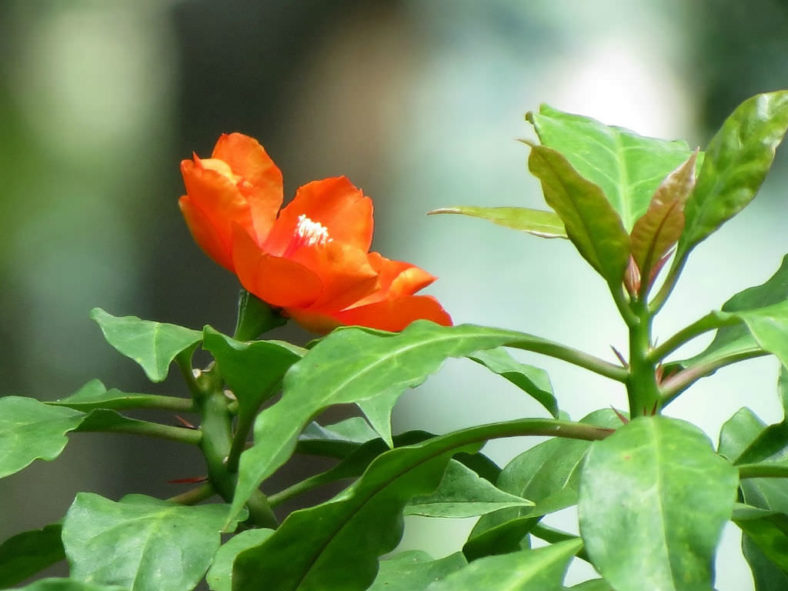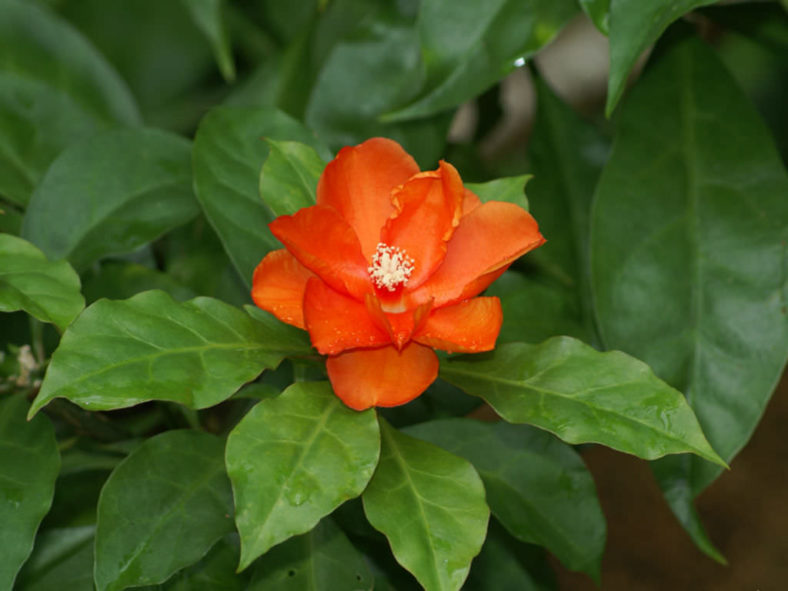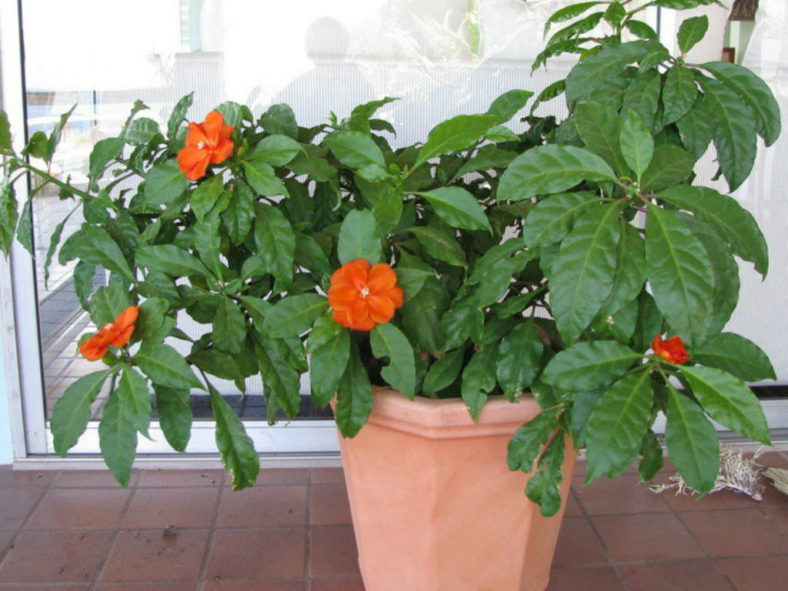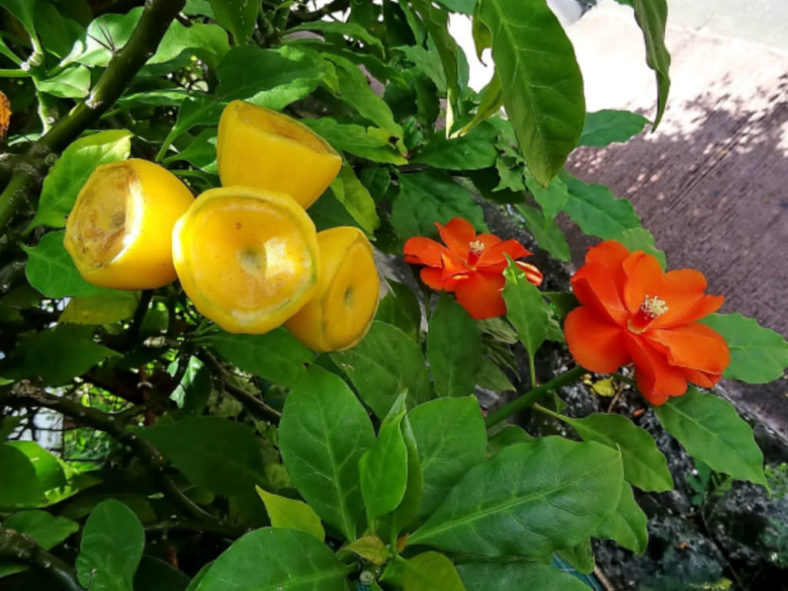Scientific Name
Leuenbergeria bleo (Kunth) Lodé
Common Name(s)
Leaf Cactus, Rose Cactus, Wax Rose
Synonym(s)
Cactus bleo, Pereskia bleo, Rhodocactus bleo
Scientific Classification
Family: Cactaceae
Subfamily: Leuenbergerioideae
Genus: Leuenbergeria
Origin
Leuenbergeria bleo is native to the shady, moist forests of Central America.
Description
Leuenbergeria bleo, formerly known as Pereskia bleo, is a shrub or small tree with a trunk and smooth, olive-green to brownish-grey branches armed with a few to several slender, straight spines. It can grow up to 26.2 feet (8 m) tall. The trank can reach up to 6 inches (15 cm) in diameter. The branches range in color from dark green to olive green. The leaves are green, arranged alternately on the branches, and are attached to the branches by a petiole up to 1.2 inches (3 cm) long. They are narrowly elliptic to oblong or lanceolate, have pinnate venation, and can measure up to 8 inches (20 cm) long and 2.8 inches (7 cm) wide. The spines are usually 1 to 5 on twigs, sometimes lacking, and can grow up to 0.4 inches (1 cm) long. They are black or nearly so, with a red base in youth, becoming gray with age. The areoles on the trunk bear up to 40 spines up to 0.8 inches (2 cm) long.
The flowers are usually few or solitary in terminal or axillary panicles. They are bright red, scarlet, or orange-red-pink and can reach up to 2.4 inches (6 cm) in diameter. The edible fruits are conical, yellow when ripe, have a truncated apex, and contain smooth black seeds. They can reach up to 2 inches (5 cm) in length and diameter.

Hardiness
USDA hardiness zones 9b to 11b: from 25 °F (−3.9 °C) to 50 °F (+10 °C).
How to Grow and Care
As with many cacti, Pereskias can be almost ignored and still flourish. One of the major advantages these plants pose as houseplants is their ease, and overwatering or overfeeding them is a bigger danger than neglecting them because it can damage their roots. If you repot them, remember to leave them alone briefly to avoid overstressing them, and keep an eye out for common houseplant pests. Many of these cacti can't really be grown as houseplants anyway due to their shrubby growth habit, and others are very rare, but when you find out, Pereskias can be good in cultivation.
They like dry conditions and don't need to be repotted often, but it is still a good idea to refresh their soil by occasionally repotting. Be careful when repotting any cactus to get hurt by its sharp spines; lift the plant from its mix and replace it in a new container before backfilling it with soil. Do not water for a few weeks after repotting.
Learn more at How to Grow and Care for Pereskia.
Links
- Back to genus Leuenbergeria
- Succupedia: Browse succulents by Scientific Name, Common Name, Genus, Family, USDA Hardiness Zone, Origin, or cacti by Genus
Photo Gallery
Click on a photo to see a larger version.


